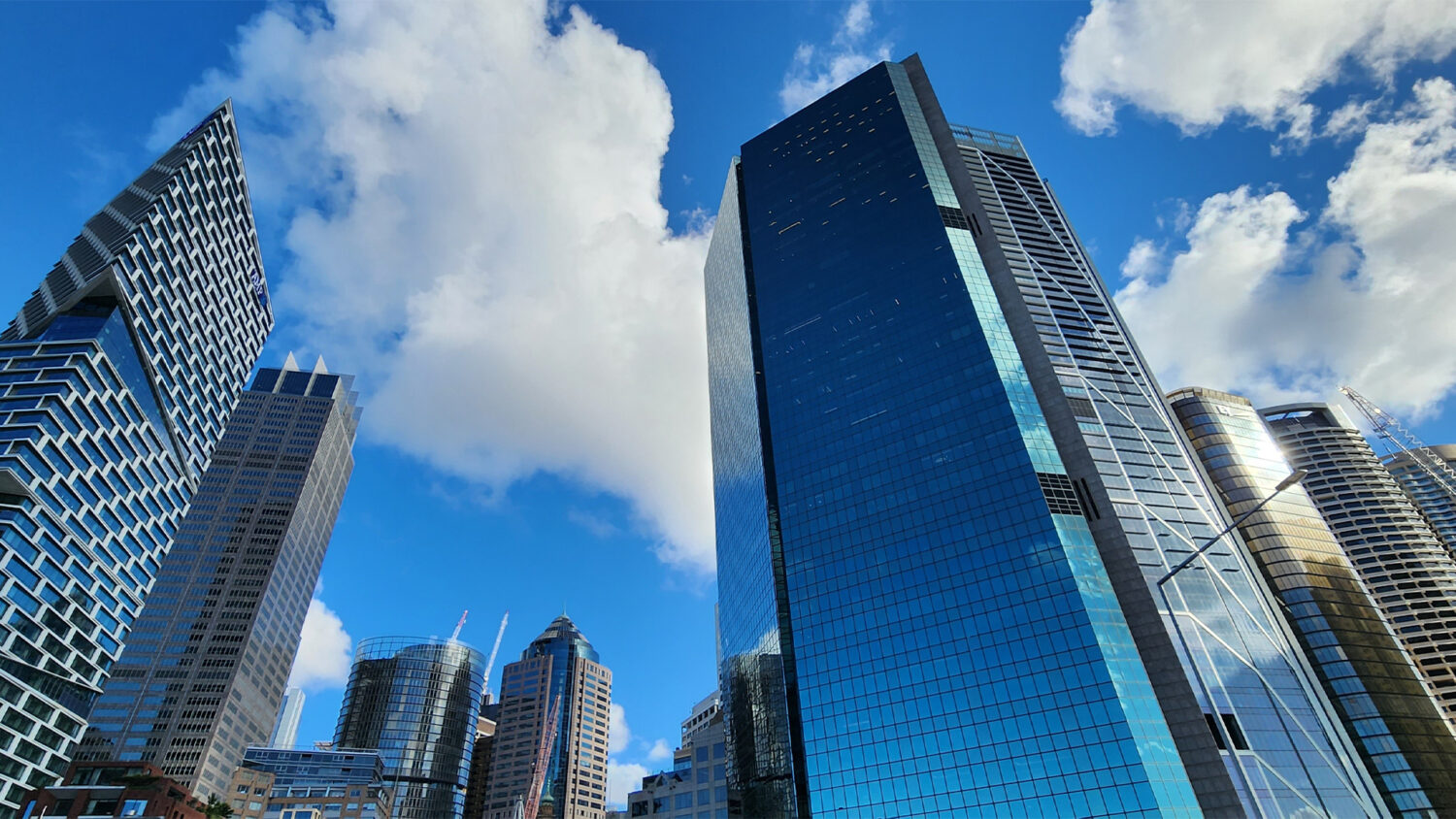Property Winners and Losers Revealed with Darwin and Regional SA Taking Centre Stage – Price Predictor Index Autumn 2025
14 May 2025
Two locations that rarely take centre stage have emerged as the front runners for real estate capital growth prospects this year, according to the Hotspotting Price Predictor Index (PPI) for Autumn 2025.
Hotspotting Director Terry Ryder said the latest research found that Darwin and regional South Australia have the most positive market fundamentals for homebuyers and investors.
“Darwin has emerged as the standout performer, with 79% of its markets ranked positively, driven by surging sales volumes and rising demand,” Mr Ryder said.
“Regional South Australia continues to deliver quietly consistent results, with two-thirds of markets classified as rising or stable, while Melbourne is staging its strongest comeback in years, with 63% of suburbs on an upward trajectory.
“The data also reinforces a growing theme – the best opportunities for growth aren’t always in the largest or loudest markets. Smaller capital cities such as Hobart and Canberra are performing better than they have in years, and a number of regional centres are delivering impressive and sustained upward sales momentum.”
Hotspotting General Manager Tim Graham said the Autumn 2025 Price Predictor Index also highlighted the shift in demand toward more affordable unit markets.
“These markets have become a more prominent part of the recovery story in cities like Sydney and Canberra, where attached dwellings are increasingly in demand and leading the growth in some locations,” Mr Graham said.
“At a national level, we’re also seeing a shift in market sentiment. Investors are returning. Transaction volumes are rising. And across much of the country, we’re witnessing a broader pattern of recovery and growth take hold.”
THE WINNERS
Darwin
Darwin has cemented its place as one of Australia’s most dynamic real estate markets, with a surge in sales activity and an impressive 79% of markets showing positive rankings, according to Mr Ryder.
“Sales volumes over the past year have skyrocketed, with a 49% increase since the December quarter alone – nearly double the level recorded 12 months ago,” he said.
“No other region in the country comes close to Darwin’s numbers. These results suggest a robust outlook for property prices in 2025, outshining recent years.”
Prominent growth hotspots include Palmerston suburbs such as Durack, Gunn, Moulden, and Rosebery, alongside Darwin City suburbs like Leanyer for houses. Unit markets are also thriving, with notable activity in Larrakeyah, Nightcliff, Stuart Park, Rapid Creek, Fannie Bay, Parap, and Coconut Grove, according to the PPI.
Regional South Australia
Regional South Australia continues to thrive, with sales activity increasing consistently quarter by quarter and a remarkable 28% jump in the December quarter, which brings overall annual growth to 47%, Mr Graham said.
“Two-thirds of markets in regional South Australia are performing positively in transaction levels, with only one market categorised as declining,” he said.
Standout regions include the Alexandrina LGA, encompassing Goolwa, Middleton, Hindmarsh Island, and Strathalbyn, all showing significant gains in sales activity.
Likewise, Victor Harbor and the Copper Coast towns of Kadina, Moonta Bay, and Wallaroo are emerging as rising markets, according to the PPI.
Greater Melbourne
Greater Melbourne is experiencing its most optimistic market conditions in years, highlighted by the December quarter’s highest residential sales levels since the COVID-19 boom, Mr Ryder said.
“Sales activity has surged since early 2023, with December quarter levels up by 16.4% compared to the previous year,” he said.
“An impressive 63% of suburbs now rank as rising markets.”
Local government areas like Monash, Moreland, Yarra, Frankston, and Mornington Peninsula are among the strongest performers, while unit markets are thriving in suburbs like Bentleigh East, Brunswick, Richmond, St Kilda, and Blackburn, according to the PPI.
Attached dwellings, including units and townhouses, continue to maintain a solid presence, comprising around 36% of total residential sales, Mr Ryder said.
Hobart
Mr Graham said Hobart’s property market has made a significant recovery, with 60% of its 35 markets now ranked positively, marking substantial improvement from previous quarters.
“The proportion of suburbs with negative rankings has dropped dramatically from 57% to 26% in just one quarter,” he said.
“Transaction levels are up 20% quarter-on-quarter, making them 14% higher than the same time last year.
“Leading this growth is the Clarence LGA, where suburbs such as Howrah, Lindisfarne, Geilston Bay, Rokeby, and Risdon Vale continue to perform consistently or exhibit rising trends.”
Sandy Bay, North Hobart, New Town, and Lenah Valley in the City of Hobart LGA also rank as thriving markets, according to the PPI.
Canberra
Mr Ryder said the Canberra property market is on an upward trajectory, driven by a surge in apartment sales over the past three quarters.
“A year ago, apartments accounted for just 24% of residential sales, but that figure has climbed to 38% over the last two quarters, fuelling a broader increase in sales activity,” he said.
With 54% of Canberra markets now ranked positively and only 18% classified as negative, the data paints a strong picture. Of the 80 markets analysed, 38 have rising transaction levels – many of which are apartment-focused markets.”
Key growth areas include Belconnen, as well as the inner-city suburb of Kingston and Phillip, where unit sales momentum remains strong, he said.
Adelaide
Mr Graham said Adelaide retains its position as one of Australia’s longest-standing growth markets, showcasing consistent performance across the region.
“Sales volumes have steadily risen quarter by quarter over the past year,” he said.
“Transaction levels surged by 18% in the December quarter and are now 37% higher than a year ago – outpacing even the 2021 COVID-19 boom.
“More than half of Adelaide markets are classified as rising, with only five suburbs listed as declining.”
Leading LGAs include Marion, Charles Sturt, Mitcham, Onkaparinga, Port Adelaide Enfield, Tea Tree Gully, and Salisbury.
Prominent suburbs driving growth include Aberfoyle Park, Campbelltown, Gawler East, Mawson Lakes, Munno Para West, North Adelaide, Para Hills, and Salisbury East, according to the PPI.
Regional Queensland
Mr Ryder said regional Queensland continues to show robust market conditions, with sales activity surging over the past two quarters.
“The December 2024 quarter saw transactions rise 20% compared to the previous year and 24% higher than two years prior,” he said.
“Since late 2022, sales activity remained stable for 18 months, but the September 2024 quarter marked a significant turning point with a major surge that carried into the December quarter.
“Currently, 50% of markets across the region hold positive rankings, and unit markets are particularly noteworthy, with half showing growth trends and a steady increase in their share of sales, up from 23% to 26% over two years.”
Key growth hotspots include the Gold Coast, where 64% of markets are classified as rising, and the Sunshine Coast, with 56% ranked positively. Notable suburbs such as Coolum Beach, Marcoola, and Sippy Downs are leading with thriving house and unit markets.
Additionally, regional Queensland towns like Rockhampton, Gladstone, Bundaberg, Townsville, Cairns, and Whitsunday are experiencing rising transaction levels, according to the PPI.
Sydney
Greater Sydney’s real estate market continues to deliver strong results, with 53% of locations now classified positively, Mr Graham said.
“Sales activity has consistently grown over the past year, with a notable boost in the latest quarter, although overall levels remain below the peak observed during the COVID-19 boom,” he said.
“Unit sales have been the driving force behind Sydney’s momentum, increasing steadily throughout the past year. Approximately 58% of unit markets now hold positive rankings, compared to 52% of house markets.”
“Suburbs like Maroubra and Wolli Creek are among the standout performers with exceptional growth patterns.”
Prominent local government areas driving the market include Bayside, Blacktown, Campbelltown, Canada Bay, Central Coast, Georges River, Hornsby, Inner West, Penrith, Northern Beaches, Ryde, and Sydney City. Both Canterbury Bankstown and Sutherland also report a majority of rising transaction levels, according to the PPI.
THE STEADY MARKETS
Brisbane
Mr Ryder said the Brisbane property market remains strong, with overall sales activity showing significant growth despite a slight dip in the December quarter.
“Sales volumes across Greater Brisbane have trended upwards over the past 12 months, with December quarter figures 13% higher than the previous year and 30% higher than two years ago,” he said.
More than half of Brisbane suburbs now hold positive rankings, with 38% categorised as negative and 9% showing no clear trend.”
The Brisbane City LGA leads the charge with 115 suburbs ranked positively, followed by the City of Moreton with 31, Logan City with 30, Ipswich City with 19, and Redland City with 12, he said.
Suburbs driving growth in the house market include Ashgrove, Aspley, Capalaba, Manly West, Regents Park, Springwood, Strathpine, Thornlands, and Victoria Point. Unit markets also shine with strong performances in Calamvale, Cannon Hill, Carina, Milton, New Farm, Teneriffe, Upper Mount Gravatt, and Woodridge, according to the PPI.
Regional New South Wales
Regional NSW’s property market has been gradually recovering since reaching a trough in March 2023, with consistent transaction increases quarter-on-quarter, Mr Graham said.
“Transaction levels have risen steadily, culminating in a 9% increase between the September and December 2024 quarters,” he said.
“Nearly half of regional NSW markets now hold positive rankings – a solid performance but still trailing the national market leaders.”
Local government areas showing strong sales momentum include Ballina, Byron, Eurobodalla, Gunnedah, Lake Macquarie, Mid-Coast, Mid-Western, Newcastle, Port Macquarie, Tamworth, and Wagga Wagga, according to the PPI.
Regional Victoria
Mr Ryder said regional Victoria’s real estate market has seen remarkable improvement, with negative rankings dropping from 50% in the September quarter to just 32% in December.
“Sales activity has steadily increased over the past nine months, culminating in a 100% rise in the December quarter,” he said.
“Ballarat, in particular, has experienced consistent growth over the past year, with six suburbs now classified as rising markets, signalling its recovery after a two-year decline.
“Bendigo also stands out, recording quarter-on-quarter growth throughout 2024. Its December quarter sales were 19% higher than the previous quarter and an impressive 45% higher than December 2023 levels.”
Other LGAs with rising sales momentum include Greater Shepparton, Latrobe, Surf Coast, and Wodonga, according to the PPI.
Regional Tasmania
Mr Graham said regional Tasmania’s property market has shown steady consistency over the past year, with transaction levels in the December quarter exceeding those of the September quarter and surpassing figures from a year earlier.
“The market remains stable overall, but lacks any significant momentum, with 40% of suburbs holding positive rankings and 45% classified as negative,” he said.
“The City of Launceston demonstrated promising growth, recording a 12% quarter- on-quarter increase in sales activity, which was also higher than the same period last year.”
Rising markets in this area include Kings Meadows, Newstead, Prospect, and Ravenswood, according to the PPI.
Regional Western Australia
Mr Ryder said regional WA’s real estate market has maintained stable performance over the past 18 months, despite a slight decline in sales activity during the December quarter.
“About 38% of locations hold positive rankings, while 36% are negative – a relatively balanced performance,” he said.
“Bunbury’s market has been declining steadily over the past year, with most suburbs classified as plateau or declining, including former boom leader Withers.
“Geraldton has also experienced a drop-off in sales activity over the past six months, with only three suburbs showing rising transaction levels compared to five declining or plateau markets.”
Bright spots in regional WA include Karratha, Kalgoorlie-Boulder, Albany, Broome, and Busselton, where sales activity continues to rise, according to the PPI.
THE LOSERS
Greater Perth
Mr Graham said Perth’s property market remains under pressure, with December quarter data confirming previous reports of declining sales activity.
“As of the December quarter, 57% of Perth suburbs are exhibiting negative trends, with another 17% showing no clear pattern. Only 26% of suburbs are recording positive sales activity,” he said.
“While sales activity has steadily fallen over the past year, some markets remain resilient.”
House markets showing growth include Como, Dianella, Morley, Piara Waters, and Wellard, alongside unit markets in Cannington, Leederville, Maylands, Wembley, Yokine, and West Perth, according to the PPI.
Conversely, declining suburbs include Aveley, Balga, Butler, Cooloongup, Ellenbrook, Mount Lawley, Palmyra, Port Kennedy, Rockingham, and Waikiki.
Notably, the southern municipality of Rockingham, a previously affordable hotspot leading Perth’s boom, now hosts several declining markets, including Baldivis, Port Kennedy, Rockingham, and Waikiki, Mr Graham said.






